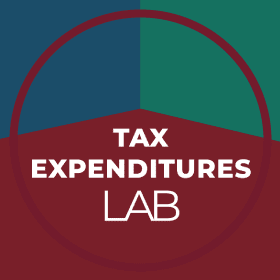This is a summary of a more detailed description of the GTED methodology that can be found in the GTED Companion Paper.
The GTED collects all publicly available data on tax expenditures (TEs) published by national governments worldwide from 1990 onwards, covering a total of 218 jurisdictions. Based on a step-by-step search process, 121 jurisdictions are currently classified as Non-reporting Jurisdictions. The remaining 97 ones do provide some type of TE data, which was gathered by the GTED team.
Wherever available, the GTED gathers revenue forgone estimates and number of beneficiaries of individual TE provisions. It also gathers metadata including the definition of the TE provision, its legal basis and duration.
Each record in the GTED is classified in four main categories: Tax Base, Policy Objective, Beneficiaries and Type of TE used. In some cases, second- or third-level categories have been introduced. For instance, Fuel Tax data is categorised at the third level within Tax Base: Taxes on Good and Services Excise Taxes Fuel Tax. If the information for a record is not available or unclear, the respective category is classified as Not stated/unclear.
When governments do not publish provision-level data but rather some kind of aggregated information, the GTED gathers this aggregate data. Likewise, if governments report on specific areas of TE only (such as tax incentives for investments, or TEs on income taxes) the GTED presents data on these areas alone. The terms TE reporting or TE report are used broadly, and refer to a large variety of public documents, ranging from annual, comprehensive reports on TEs that are part of governmental budget documentation to individual documents issued by a public body and providing some aggregate information on some specific TE mechanisms. As a minimum requirement, reports must contain some kind of information on the actual use of TE provisions. For instance, a list of available tax deductions for investments, provided by a governmental investment promotion agency, would not be considered a TE report unless they provide revenue forgone estimates or any other data that would allow users of the GTED to obtain information about the actual use of the respective TEs.
The GTED distinguishes regular and irregular reporting. A sequence of reports from 1995 to 2005 would not be considered regular reporting in the GTED, since the country had reported on a yearly basis, but not anymore. Likewise, regular is not necessarily related to annual reporting. Germany, for instance, publishes federal subsidy reports including TE data every two years since 1967. A total of 15 such reports have been issued since 1990, containing data on 29 budget years (until 2018). The GTED counts this as 29 years reported, because data is provided on a year-by-year basis and can be consulted and analysed as such.
The data is processed in a consistent format seeking to increase the level of longitudinal and cross-country comparability. Whereas revenue forgone estimates are provided as reported by governments (in local currency units, current prices), the GTED also provides figures converted into US dollars as well as indicators providing the revenue forgone through TE provisions as shares both of GDP and Tax Revenue – to compute these two indicators, data from the UNU-WIDER Government Revenue Dataset is used as input. The share of revenue forgone as a percentage of Tax Revenue is computed using figures of total tax revenue collected by countries’ central governments. The share of revenue forgone as a percentage of Tax Revenue is computed using figures of total tax revenue collected by countries’ central governments.
Besides all the effort put into ensuring comparability, cross-country analysis of TE data needs to be done cautiously. The main issue, which is inherent to TE data, regards benchmarking. TEs are defined as departures from – usually country-specific – normal tax structures or benchmarks. On this note, the GTED uses the data published by official governmental institutions, sticking to their own definitions of benchmarks, without trying to complement official figures or challenge what different countries consider as the standard tax system or the benchmark.
When it comes to the methodology used by governments to compute the fiscal cost of TE provisions, the vast majority of countries report on TEs based on the revenue forgone approach that estimates the amount by which taxpayers have their tax liabilities reduced as a result of a TE based on their actual current economic behaviour. Since the revenue forgone methodology is static, the potential interconnections between different TE provisions are not taken into account when computing the fiscal cost of TEs based on it. Hence, aggregating revenue forgone estimates of the individual provisions computed separately and without taking behavioural changes into account would not result in a figure that represents the total cost of all TEs.
While providing users of the database with the opportunity to draw comparisons across countries or country groups, we want to be clear that any such comparison should be mindful of different levels of reporting, differences in national benchmark systems and methodological shortcomings of revenue forgone estimations.
Country Income Groups and Regional Classifications are based on the latest World Bank classifications.


